Bacteria Evolution
Professor Lance Price, Roy Kishony, Tim Walsh
Horizon - Defeating the Superbugs
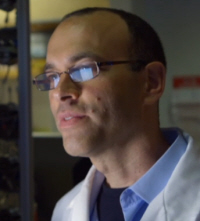
Professor Roy Kishony
This is evolution in action. Over millions of divisions, the bacteria's DNA changes.
Professor Roy Kishony "Evolution happens here fairly fast, in basically two weeks of experiment we see a very dramatic increase in drug
resistance, 1000-fold increase in drug resistance. So, yes, you might want to say evolution is happening in front of our eyes as we speak."
Used properly, antibiotics can kill bacteria and save lives, but as these experiments show, low levels of antibiotics encourage bacteria to
develop assistance. In the real world too, overuse of antibiotics may actually be causing more superbugs to emerge. The bugs were once rare and
infrequent, but they are now showing up across the world's major cities.
Professor Tim Walsh studies these newly emerging outbreaks, and there's one region that concerns him most of all.
Tim Walsh "the southern Asian continent suffers from antibiotic resistance more than probably any other area on the planet."
For the last three years he's been travelling to southern Asia to understand why some of the poorest parts of the planet are superbug
hotspots.
He's on his way to Karachi's Civil Hospital, in Pakistan. In both rich and poor countries, resistant bacteria cause their most costly and
deadly infections in the places where people are most vulnerable – hospitals.
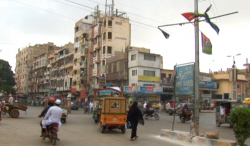
Bustling Karachi
The doctors at the hospital are working with Professor Walsh to identify and improve the conditions contributing to the spread of superbugs.
Professor Walsh "One of the key issues in places like the civil Hospital is sort of overcrowding of the wards and lack of infection control.
Windows are open so bacteria can kind of blow into intensive care units etc, and there seems to be a lack of understanding as to the importance
of things like hand-washing in moving from patient to patient, or indeed from ward to ward."
The doctors are facing dangerous infections, in impossible conditions. Professor Walsh has found there are no dedicated infection control teams,
insufficient bacterial diagnosis, and no isolation rooms.
Tim Walsh "Well, the people in Karachi know about their limitations, and that's the great thing, they are very open and honest about them, they
realise they must do something about it."
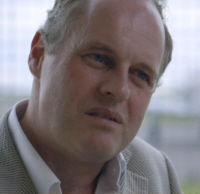
Professor Tim Walsh
Tim Walsh "And there are no instructions, certainly not with these, on usage. A lot of people just will go to the corner shop and simply buy a whole
range of antibiotics and simply self-medicate and you can see on this one here one tablet has obviously been sold to one particular person – just
to take one tablet is just crazy. You're just exposing the bacteria to what we call sub-killing-concentrations of that antibiotic. And so you
are actually not killing the bacteria, or indeed preventing it from growing, and more or less all we're doing to the bacteria is saying, okay,
here's the antibiotic, become resistant."
It's not just the sale of antibiotics that's unregulated. Elsewhere in Asia, outlets from the industrial-scale manufacture of antibiotics have
contaminated rivers and streams. As a result, societies can be awash with antibiotics, the perfect conditions for superbugs. However, the
conditions needed to create a superbug are not just happening in Asia, but right across the world.
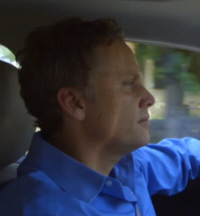
Professor Lance Price
Professor Lance Price is a superbug tracker. A few years ago, he was called to investigate a superbug which helped to reveal how another use of
antibiotics was driving resistance.
Lance Price "Bacteria are everywhere. They are a natural part of our environment, there are a natural part of us, in fact human beings are sort of a
walking ecosystem, we have bacteria that live in and on us, one of the bacteria that I'm particularly interested in is Staph aureus. It's estimated
that between 20% and 30% of humans are colonised with Staph aureus, and most of the time it doesn't pose a problem."
If Staph aureus does cause an infection, it is usually straightforward to treat with an antibiotic called methicillin. But when it develops
resistance to methicillin it becomes a superbug we've all heard of, MRSA.
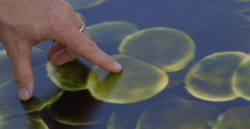
Staph aureus
Lance Price "This is a picture of methicillin-resistant Staph aureus. Methicillin-resistant Staph aureus and regular Staph aureus don't look any
different in a photo like this, but when you look at the DNA, you'll see very distinct differences. MRSA carries genes that make it resistant to
methicillin, that's why we call it methicillin-resistant Staph aureus, or MRSA."
He uses these genetic differences as clues to lead him to the source of the outbreaks.
Lance Price "We crack these cells open and we sequence the DNA, and then use that to trace the evolutionary history of these bugs and determine
how theey can sometimes became resistant to methicillin."
Three years ago, he discovered a new strain of MRSA in 18 different countries, including the USA and in Europe. And there was one thing that
seemed to connect them all.
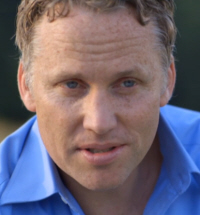
Lance Price
Lance Price "A new strain of MRSA emerged that we'd never seen before, and when we started tracking it back we found out that most of the people
who were getting it were actually employed in the livestock industry, so people that had direct exposure to food animals. And that set off an
investigation for us."
The genetic trail revealed this strain of MRSA have passed into these people from pigs. But then they went further. He tried to follow the genes
back to a time before the MRSA became resistant.
Lance Price "And what we found was a big surprise to us, we found that in fact that this new strain has started off in people but it was not
MRSA, it was just Staph aureus, or SA, it spread to pigs, and that's where it became resistant to methicillin."
Professor Price had discovered that this ordinary Staph aureus bacteria had mutated while it was in the livestock, to become potentially
deadly. To him, the reason was obvious, antibiotics.
Lance Price "The simplest explanation is that we're using lots and lots of antibiotics in food animal production. Most of the time they're just
being added to animal feed, so they're being mixed in giant silos of feed and given on a routine basis, just basically with every meal that animals
are getting a little bit of antibiotics."
Many farmers thought it was the best way to keep closely packed animals healthy and for them to grow faster, but Prof Price believes
the superbug he was tracking was created as a result of this kind of antibiotic use.
Lance Price "We're raising animals under the conditions that we know lead to the spread of bacteria between people, and then we add the
magic ingredient which is antibiotics, which just virtually guarantees that we're going to have drug-resistant bacteria."





